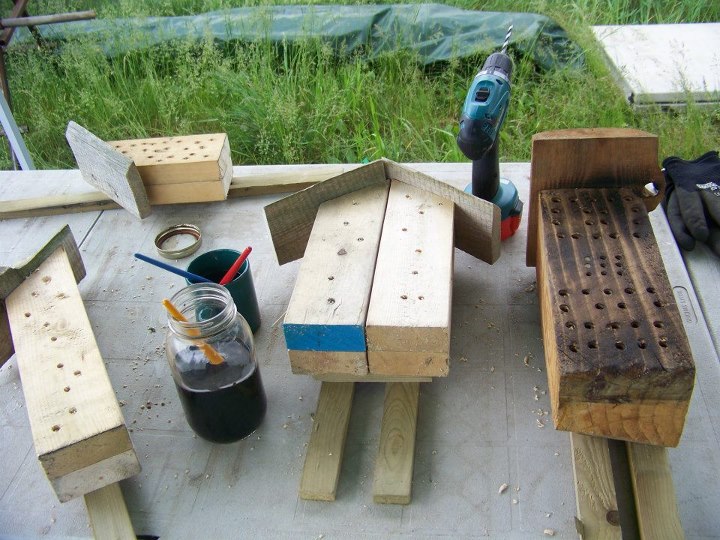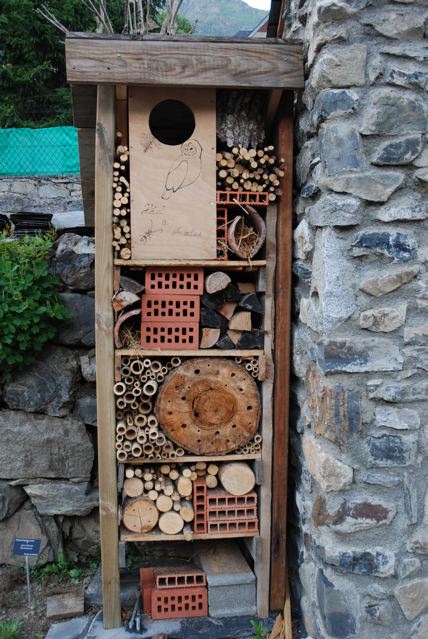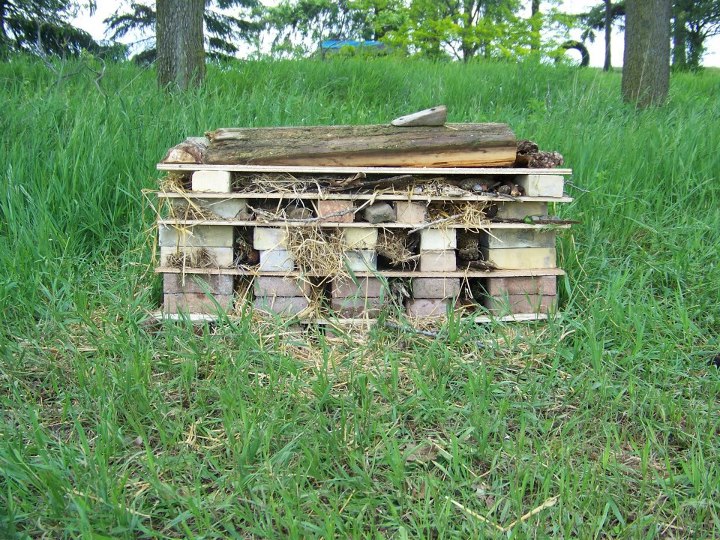
Native bees such as mason, leafcutting, mining, sweat and bumble bees are just a few of the important and interesting pollinators that you can attract to your garden by providing habitat that can be purely functional, or can double as garden art! Inadvertently attract other insects, and that's okay -- all creatures have their part to play in the ecosystem.
Learn what to do if you think you have a wild bee nest in your house or yard.
When constructing native bee nests, we do advise you to do your best to use natural materials, found outside. Ensure that you are not disturbing already established insects. Keep in mind that if you're drilling holes into old stumps or wooden blocks, be sure to drill cavities at least 15.5 cm (6") long; otherwise, you will skew the sex ratio of the next generation.
70% wild bees nest in the ground; only 30% nest in cavities and stems. Keep these ratios in mind when offering nesting places.
Providing habitat (nesting sites) is easy. Reduce or eliminate your use of landscape fabric so that bees may have access to the ground. Remember that mulch laid thick will also interfere with a bee's ability to nest underground. Allow stumps and tree deadfall to remain where it lands, or artfully arrange it ... collect twigs and branches ... build small gravel or rock piles in sunny locations. Allow a pile of mud to be accessed by the bees who use it, or for butterflies to puddle. When collecting your natural materials, make sure there is not a native bee or insect nesting there already!
Allowing your raspberry, elderberry and other spent canes to remain is the best way to attract the next generation of potential pollinators in your area. Or do as Heather Holm, author of Pollinators of Native Plants, recommends -- "it's no trouble to leave some stubble" -- and trim your canes such that at least 38 cm (15") remains. You can even stick the tops back into the ground randomly, providing further habitat.
It turns out that bee hotels may have unintended consequences, such as attracting non-native wasps. While wasps can pollinate too and are important in their own right, just keep in mind that building such nests may not yield purported results ... consider reading this paper Bee Hotels as Tools for Native Pollinator Conservation: a Premature Verdict? from Toronto bee expert, Scott MacIvor.


The following links will take you to sources that may inspire the creation of beneficial pollinator habitat:
Xerces Society instructions for nest-building
Watch as Lindsay Coulter "Queen of Green" shows you how to make a simple nest and bee bath
Nesting Habitat for Native Bees - blog post by Anna Hess
